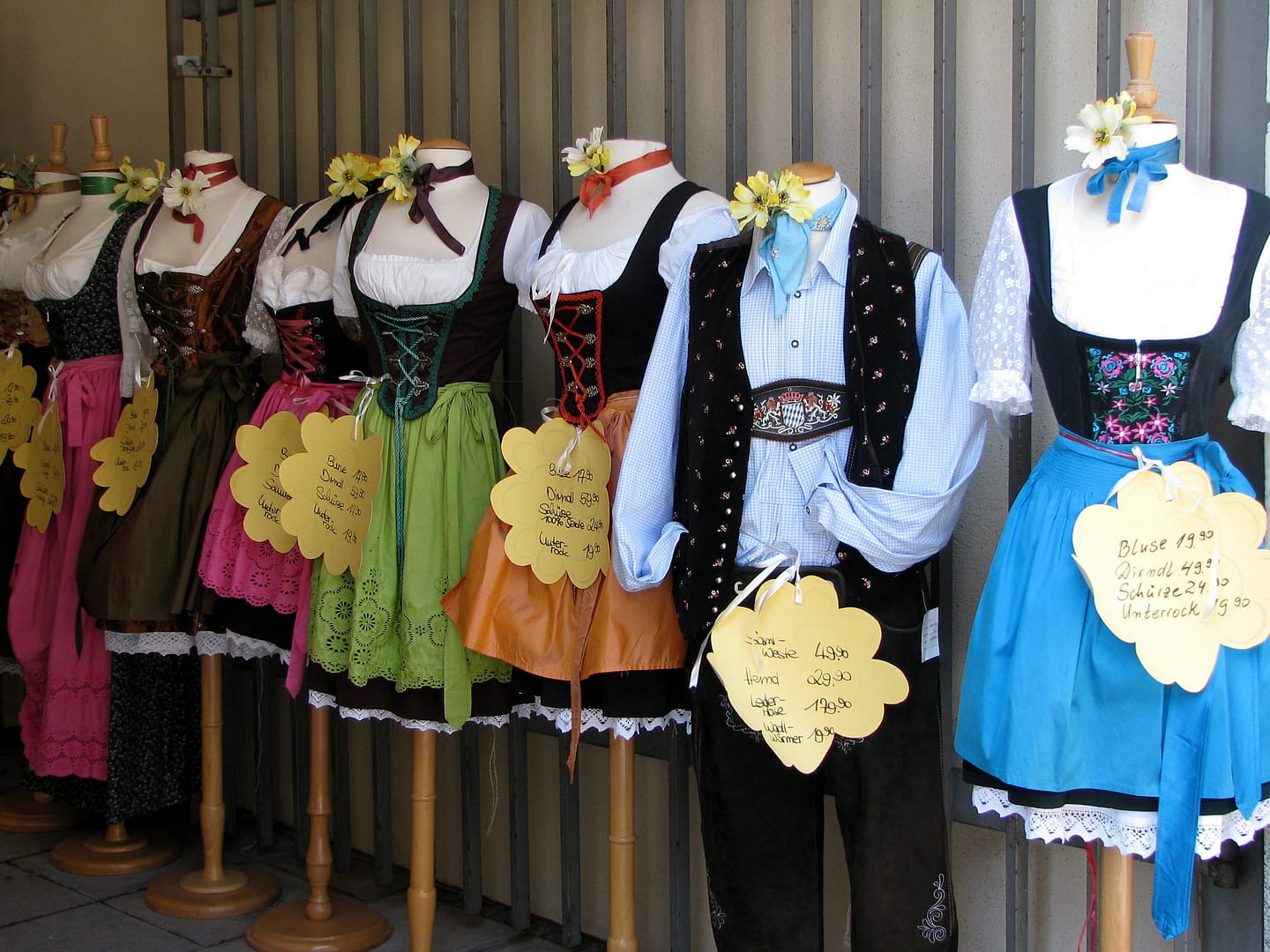A Dirndl (pronounced dern-DULL) is a traditional Bavarian dress worn by women during Oktoberfest. It’s a symbol of Bavarian culture and tradition, and is a key part of the Oktoberfest experience. The Dirndl consists of a bodice, a low-cut blouse with short puff sleeves, a full skirt, and an apron.
The Dirndl originated as a type of simple dress worn by Alpine peasants. Over time, however, it evolved into a much more elaborate and decorative outfit, with various colours, patterns, and accessories. Today, wearing a Dirndl to Oktoberfest is seen as a sign of respect for Bavarian culture and heritage.
While the Dirndl is a common sight at Oktoberfest, it’s also worn at other traditional Bavarian events and celebrations. It’s a versatile outfit that can be dressed up or down depending on the occasion.
The History of the Dirndl
While you might associate the dirndl purely with the lively Oktoberfest celebrations, it actually has a deep-rooted history that’s as rich as the Bavarian culture itself.
Origin of the Dirndl
The dirndl, a type of traditional dress worn in Germany, Austria, and Switzerland, originally emerged in the 19th century. It started as a simplified form of the Rococo dress, typically worn by maids and working women in rural Alpine regions.
Interestingly, what is a dirndl today was initially a practical and humble work dress. Its simple and functional design, consisting of a bodice, a full skirt, and an apron, was well-suited to the rural lifestyle. It was made from inexpensive, durable materials that could withstand the rigours of daily chores.
However, the dirndl’s transition from a work dress to a symbol of Bavarian tradition didn’t happen overnight. This transformation can be traced back to the late 19th century when the upper classes began to adopt the dirndl as a fashionable trend during their summer retreats to the countryside.
Evolution of the Dirndl Over Time
The dirndl has undergone significant changes over the centuries, reflecting the shifting societal norms and fashion trends. In the early days, the dirndl was a simple, practical dress with little adornment. However, as it gained popularity among the upper classes, it saw a transformation in terms of style, design, and material.
In the 20th century, the dirndl became more elaborate and ornate, incorporating elements such as intricate embroidery, lace trimmings, and luxurious fabrics. It also started to be worn on special occasions and public events, such as church festivals and town fairs.
The dirndl’s popularity soared during the 1930s, and it became a staple at Oktoberfest celebrations. Its design became even more intricate, with vibrant colours and patterns, and the apron knot’s position started to signify the wearer’s marital status.
Today, the dirndl remains a crucial part of Bavarian tradition and culture. It’s worn with pride at Oktoberfest and other traditional events, representing a unique blend of historical roots and contemporary fashion trends.
From a modest work dress to a vibrant symbol of Bavarian tradition, the dirndl’s evolution reflects the dynamic nature of culture and tradition. As you don your dirndl for Oktoberfest, take a moment to appreciate the rich history embodied in its every stitch, and the journey it has undertaken over the centuries. For more on Oktoberfest and its traditions, explore our other articles, such as what is lederhosen and what does o ‘zapft is! mean.
The Meaning behind a Dirndl
The dirndl, while being a stunning garment, also carries significant meaning in its design. The colours, patterns, and even the way the apron is knotted have rich cultural significance and deep-rooted traditions.
The Traditional Dirndl: Colors and Patterns
The traditional dirndl is a riot of vibrant colours and intricate patterns, each with its own meaning. Generally, darker colours, such as black, dark green, or navy blue, are considered formal and suitable for evening events. On the other hand, lighter hues are typically worn during the day.
Patterns on a dirndl also carry meaning. Checkered patterns are common and bear a countryside charm, while floral designs symbolise femininity and are perfect for festive occasions like Oktoberfest.
The Dirndl Apron Knot
The knot on a Dirndl isn’t merely a stylistic choice; it serves as a silent cue about the wearer’s marital status. For a deeper dive into the history and nuances of the dirndl, check out our blog post on what the knot on a dirndl means.

